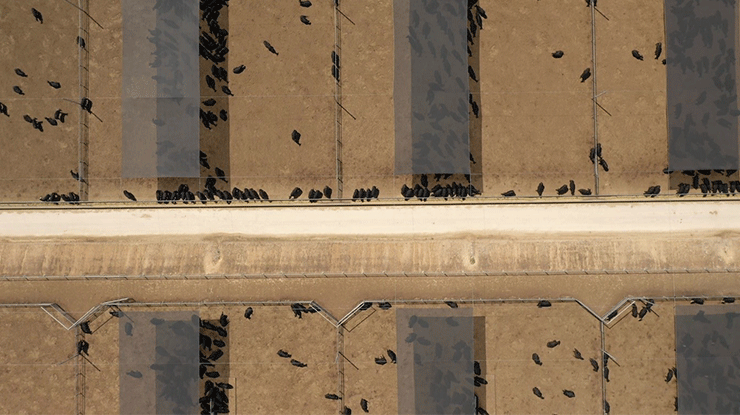 An easy-to-understand guide, Moving towards carbon neutrality - opportunities for the Australian feedlot industry, outlines pathways to carbon neutrality for Australian feedlots and is available now.
An easy-to-understand guide, Moving towards carbon neutrality - opportunities for the Australian feedlot industry, outlines pathways to carbon neutrality for Australian feedlots and is available now.
Key points:
- The new guide provides guidance on carbon neutrality, carbon accounting, emission reduction and more.
- Many aspects of feedlot operations make emission mitigation more readily achievable.
- Prioritising carbon accounting now and investing in GHG mitigation strategies ensures market access in the future and utilises technologies that drive economic, environmental and social benefits.
Funded by MLA and produced by Dr Stephen Wiedemann and Emma Longworth from Integrity Ag & Environment, the guide:
- defines carbon neutrality
- provides guidance on generating a carbon account for a feedlot
- reviews emission reduction strategies
- outlines the economics of carbon neutrality for Australian feedlots.
Global warming and greenhouse gas (GHG) emissions are a topic of international concern, with governments, companies and industry groups now moving to establish targets for the reduction of emissions over time.
In 2017, MLA announced the Australian red meat and livestock industry had set the ambitious target to be carbon neutral by 2030 (CN30). The target means that by 2030, Australian beef, lamb and goat production, including lot feeding and meat processing, will make no net release of GHG emissions into the atmosphere.
Emission mitigation achievable
Dr Wiedemann said the agricultural sector's focus on improvements in on-farm practices, landscape management and animal nutrition – as well as advancements in technology and production strategies – provides high potential for GHG mitigation.
"Feedlots are an important part of the beef supply chain, providing a high level of production efficiency and lower GHG emissions per unit of feed intake and per kilogram of liveweight gain than grazing cattle," Dr Wiedemann said.
"Many aspects of feedlot operations make emission mitigation more readily achievable, and consequently, feedlots have an important role in working towards the industry goal of carbon neutrality.
"For example, the diet of grainfed animals can be readily manipulated, and with highly effective mitigations, it's possible that enteric methane fermentation could be greatly reduced or even eliminated, with the potential added benefit of improved feed efficiency and growth rates," Dr Wiedemann said.
With the increasing proportion of the national herd being fed in feedlots, Dr Wiedemann believes feedlots have a responsibility to contribute towards reduced emissions.
"The growing interest in sustainable products and methods to move towards low or zero GHG emission creates the opportunity for lot feeders to differentiate themselves from competitors by marketing carbon neutral accredited beef," he said.
"Prioritising carbon accounting now and investing in GHG mitigation strategies ensures market access in the future and utilises technologies that drive economic, environmental and social benefits.
"Outlining pathways to progress towards carbon neutrality will assist lot feeding organisations and grainfed beef brand owners in decision making and business planning."






